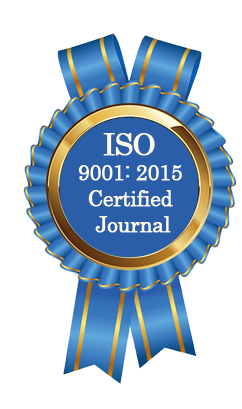| All | Since 2020 | |
| Citation | 105 | 60 |
| h-index | 4 | 4 |
| i10-index | 3 | 2 |
WJAHR Citation 
Login
News & Updation
Best Article Awards
World Journal of Advance Healthcare Research (WJAHR) is giving Best Article Award in every Issue for Best Article and Issue Certificate of Appreciation to the Authors to promote research activity of scholar.
Best Article of current issue
Download Article : Click here
Indexing
Abstract
COMPARISON BETWEEN VAGINAL AND SUBLINGUAL ADMINISTRATION OF MISOPROSTOL USE FOR LABOR INDUCTION IN PRIMIPAROUS
*Meis Suliman, Hasan Saleh and Sahar Hasan
ABSTRACT
Background: Increased rate of caesarean sections recently due to cervical immaturity? increased incidence of fetal distress during labour? and lack of knowledge of the best drug and the optimal method for induction of labor? and in view of this? we conducted an observational prospective study to compare the sublingual and vaginal misoprostol in the induction of labor in full-term breech women. Objective: The main objective of this study was to compare the vaginal and sublingual administration of misoprostol to induce labor in in full-term Primigravida who are indicated for termination of pregnancy in terms of efficacy? safety? and recorded side effects on the mother and fetus. Materials and Methods: This study is a prospective study. The study included pregnant women attending the Department of Obstetrics and Gynecology at Tishreen University Hospital )TUH) in Lattakia. In the period from the beginning of March 2022 until the end of February 2023? for those who have met the criteria for admission. The women in the study sample were divided into two groups as follows: The first group included 50 women who were induction of labor by giving misoprostol 25 mcg every 4 hours sublingually The second group included 50 women. Induction of labor was performed by giving misoprostol 25 mcg every 4 hours vaginally. Results: The two groups were controlled for the following variables The woman's age? weight? gestational age? and Bishop's index of success were variable with respect to these variables. The advanced age? higher body mass index? younger gestational age? and lower Bishop's index were associated with lower rates of success in the two groups without having a statistically significant significance. The success of misoprostol was 86% in sublingual administration and 80% in vaginal administration. Normal delivery occurred in 78% in sublingual administration and 72% in vaginal administration without a statistically significant difference. There was a convergence in the time required for labor to occur between the two methods of administration in the time required for labor to occur starting from administration and in the number of misoprostol doses required for labor to occur? and there was no significant statistical difference, As for the general side effects (digestive and hyperthermia)? they were higher in the sublingual route than in the vaginal route? without a statistically significant difference. In the complications associated with labor and delivery? the most common of these complications was the presence of meconium in the amniotic fluid in 16% of women who used misoprostol under the tongue? compared to 14% in vaginal use? without a statistically significant difference. Fetal distress also occurred in 6% of the sublingual use versus 2% of the vaginal use? without a statistically significant difference. As for the rest of the complications? such as inertia bleeding? perineal and cervical tears? it was higher in the vaginal administration group? but without a statistically significant difference. As for the newborn's Apgar in the first fifth minute? it was close in the two groups without a statistically significant difference Conclusion The current study confirmed the effectiveness of giving misoprostol 25 mcg every 4 hours in cervical ripening and induction of labor in full-term breech women? and that there is no preference between the two methods of vaginal or sublingual administration in terms of average duration of induction? success of induction of labor? and maternal and neonatal complications.
[Full Text Article] [Download Certificate]
